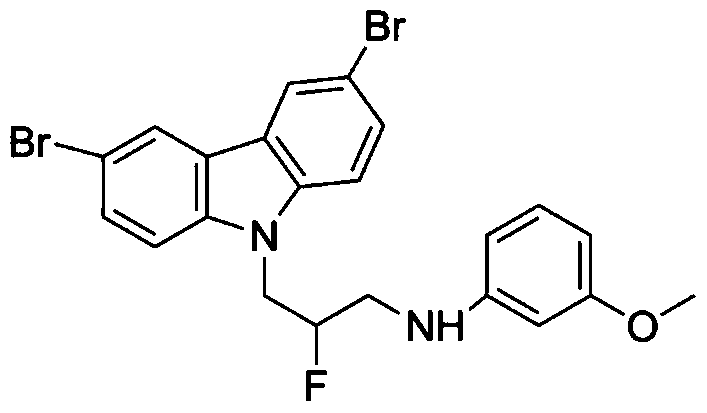Application of compound p7c3‑a20 in the preparation of drugs for treating cerebral ischemic diseases
A technology of P7C3-A20 and compounds, applied in the field of compounds, can solve the problem that P7C3-A20 has no protective effect on cerebral ischemic injury, and achieve the effects of reducing the size of cerebral infarction, broad application prospects, and improving survival rate
- Summary
- Abstract
- Description
- Claims
- Application Information
AI Technical Summary
Problems solved by technology
Method used
Image
Examples
Embodiment 1
[0019] 1. Method
[0020] 1. Culture of mouse cerebral cortex neurons
[0021] (1) Pregnant mice were taken, E15-18 days, sacrificed by dislocation of the cervical spine, wiped the abdomen with 75% alcohol, laparotomy, and excised the uterus.
[0022] (2) Place the uterus in a petri dish containing double-antibody sterile deionized water, and transfer it to the cell room.
[0023] (3) Quickly transfer the uterus to ice-cold high-glucose DMEM, tear the uterus from the uterine horns with ophthalmic scissors, take out the fetal mouse, decapitate it with scissors, peel it off carefully, and take the brain; separate the cerebral cortex under a microscope and carefully peel it off meninges and blood vessels.
[0024] (4) Transfer the brain tissue into fresh ice-cold high-glucose DMEM, rinse twice, transfer to a 1.5mL EP tube, place it on ice, and cut the brain tissue as much as possible with curved scissors.
[0025] (6) Transfer the shredded brain tissue to a small Erlenmeyer fl...
Embodiment 2
[0040] 1. Method
[0041] Rats (Sprague-Dawley rats, weighing about 250 g, Shanghai Slack Experimental Animal Co., Ltd.) were used to prepare a permanent cerebral ischemic injury model. The process is as follows: rats were anesthetized, the skull was opened, and the middle cerebral artery was electrocoagulated directly under visual observation, resulting in blockage of the left middle cerebral artery. Thirty minutes later, rats were given intraperitoneal injection of P7C3-A20 (30 mg / kg). The skull was reset and the skin was sutured, and the rat model of permanent cerebral ischemia caused by occlusion of the middle cerebral artery was successfully prepared. Twenty-four hours after middle cerebral artery occlusion, the cerebral infarct area was detected. The volume of cerebral infarction was detected by 2,3,5-triphenyltetrazolium chloride (purchased from Amersco) staining method, that is, TTC staining method.
[0042] 2. Results
[0043] The results are shown in Table 1. It ...
PUM
 Login to View More
Login to View More Abstract
Description
Claims
Application Information
 Login to View More
Login to View More - R&D
- Intellectual Property
- Life Sciences
- Materials
- Tech Scout
- Unparalleled Data Quality
- Higher Quality Content
- 60% Fewer Hallucinations
Browse by: Latest US Patents, China's latest patents, Technical Efficacy Thesaurus, Application Domain, Technology Topic, Popular Technical Reports.
© 2025 PatSnap. All rights reserved.Legal|Privacy policy|Modern Slavery Act Transparency Statement|Sitemap|About US| Contact US: help@patsnap.com



